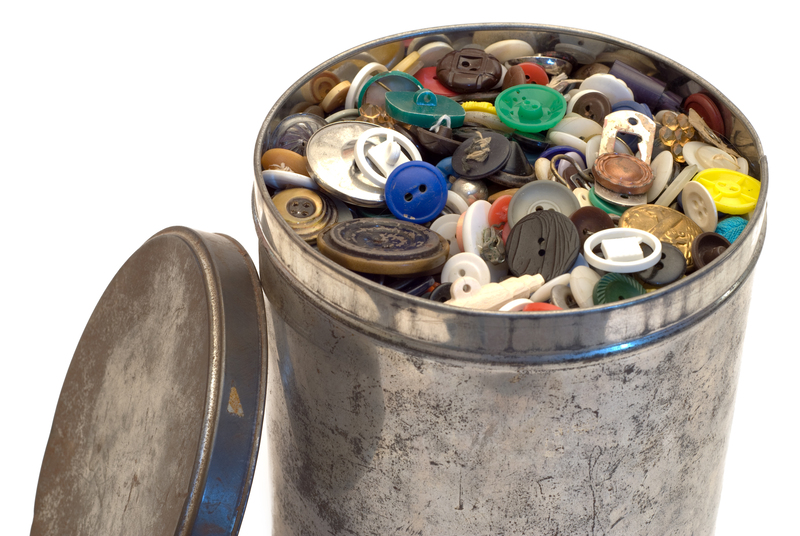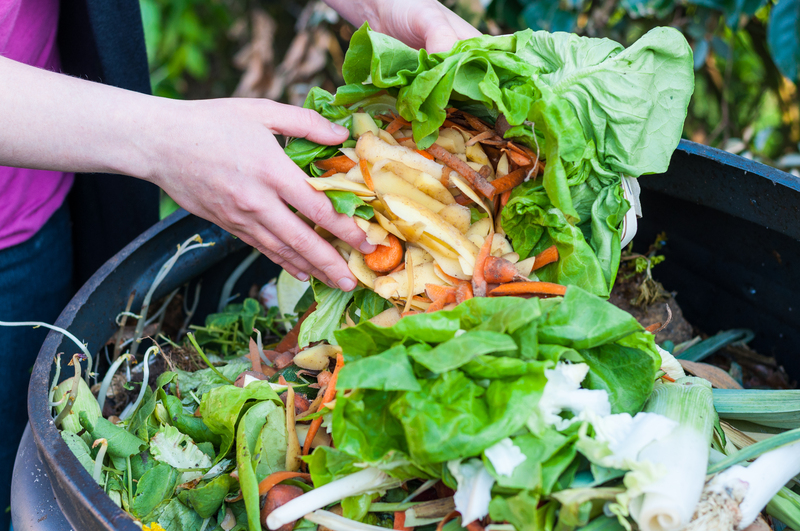Tips to Properly Handle and Dispose of PPE Waste
Personal Protective Equipment (PPE) such as masks, gloves, gowns, and face shields play a vital role in protecting individuals from exposure to infectious agents or hazardous materials. With the increased use of PPE in healthcare, industrial, and even household settings due to global health crises, proper handling and disposal of PPE waste has never been more crucial. Mismanagement of PPE waste can endanger public health, wildlife, and the environment. In this comprehensive guide, you'll discover the best practices and essential tips for effectively managing PPE waste, safeguarding both human health and our planet.
Why Proper Handling and Disposal of PPE Waste Is Important
PPE waste, if not managed correctly, poses serious health and environmental risks. Used gloves, masks, and gowns may be contaminated with pathogens or hazardous chemicals. Poor disposal practices can lead to the spread of infection, accidental exposure, and pollution of waterways and landfills. Understanding the significance of responsible PPE waste management is the first step towards creating safer communities and workplaces.
Environmental Impacts of Improper PPE Waste Disposal
- Plastic Pollution: Many PPE products are made of non-biodegradable plastics that persist in ecosystems for decades, contributing to land and marine pollution.
- Wildlife Endangerment: Discarded gloves or masks can entangle animals or be mistakenly consumed, causing injury or death.
- Soil and Water Contamination: Chemicals leaching from PPE waste can degrade soil health and pollute water bodies.
Health Risks Associated With Mismanaged PPE Waste
- Pathogen Transmission: Infectious diseases can spread if contaminated PPE is handled carelessly or left in public spaces.
- Occupational Hazards: Sanitation workers face risks of exposure without proper protocols in place.
- Community Spread: Improperly discarded PPE in shared environments heightens the risk of disease for vulnerable populations.

Understanding Types of PPE Waste
Not all PPE waste is the same. Recognizing the different types helps in determining the best disposal methods for safety and compliance.
- Single-use PPE: Includes disposable masks, gloves, gowns, and shoe covers meant for one-time use.
- Reusable PPE: Items such as face shields or cloth masks that can be disinfected and reused.
- Contaminated vs. Non-contaminated: PPE may be contaminated with infectious agents, chemicals, or simply general dirt and dust. The contamination level dictates disposal protocols.
Essential Tips for Safe PPE Waste Handling
Proper PPE waste handling minimizes risks for individuals and communities. Adhere to these expert recommendations for safe management throughout the disposal process:
1. Always Wear Fresh Gloves When Handling Used PPE
- Before collecting or touching used PPE, put on a new pair of disposable gloves to protect yourself from contaminants.
- Do not touch your face, eyes, or mouth during the process.
2. Avoid Sorting Through PPE Waste Directly
- Do not attempt to separate or recycle items unless trained and safe protocols exist for doing so.
- Mixed PPE should be handled as hazardous waste to avoid unnecessary exposure.
3. Double-Bag Contaminated PPE
- Used PPE should be placed in a sturdy, leak-proof bag. Double-bagging greatly reduces the risk of spillage or leaks.
- Knot the bags securely to minimize contact and airborne transmission.
4. Mark and Label PPE Waste Bags Clearly
- Label bags containing PPE waste with "hazardous," "infectious," or other applicable warnings.
- If possible, use color-coded bags (such as red or yellow) to distinguish PPE waste from regular trash.
5. Store PPE Waste in a Secure Location
- Keep sealed PPE waste in a designated, well-ventilated area, away from common living or working spaces.
- Ensure animals and children do not have access to PPE waste containers.
6. Follow Local Regulations and Guidelines
- Laws can vary on how PPE waste disposal must be conducted. Adhere to any national, state, or municipal requirements for PPE waste.
- Institutions may require documentation for the generation and disposal of PPE waste.
Best Practices for PPE Disposal at Home
Households commonly use disposable masks and gloves, especially during pandemics. Here are practical steps for safely managing PPE waste at home:
Proper Disposal Steps
- Do not reuse disposable PPE.
- After use, remove PPE carefully, avoiding contact with the outside of masks or gloves.
- Place items in a dedicated trash bin lined with a plastic bag and keep the lid closed.
- Double-bag if the items are visibly soiled or used by someone unwell.
- Wash hands with soap and water for at least 20 seconds after handling PPE waste.
- Disinfect the bin and surrounding area regularly to prevent contamination.
Creating a PPE Waste Station at Home
- Establish a specific area for PPE removal at entry points.
- Place clear signage and instructions for visitors and family members.
- Keep hand sanitizer and trash bags accessible.
Disposing of PPE Waste in the Workplace
Offices, factories, and healthcare settings require structured PPE waste management systems to comply with legal and ethical standards. Consider these strategies:
Setting Up PPE Waste Collection Points
- Install PPE-specific waste bins in accessible, high-use areas (e.g., entrances, restrooms, workstations).
- Ensure bins are prominently marked and regularly emptied to prevent overflow.
- Train staff on correct usage of PPE disposal stations.
Training and Awareness Programs
- Conduct regular briefings on the importance of safe PPE waste handling.
- Use posters, emails, and meetings to deliver ongoing education about safe disposal methods.
Collaboration with Licensed Waste Management Companies
- Arrange for authorized hazardous or medical waste collectors to remove bulk PPE waste.
- Verify that third-party services comply with environmental and safety regulations.
Special Considerations for Healthcare Settings
Hospitals and clinics generate large volumes of PPE waste potentially contaminated with pathogens and hazardous chemicals. Extra caution and regulatory compliance are imperative.
Segregation of Waste Types
- Differentiate between infectious, chemical, and general PPE waste using color-coded bins.
- Develop protocols for disposing of sharps, gowns, and contaminated face shields.
On-Site Treatment Options
- Use autoclaving (steam sterilization) or chemical disinfection for infectious PPE waste where applicable.
- Incinerate hazardous PPE waste in licensed facilities to ensure safe destruction.
Documentation and Compliance
- Maintain records of waste volumes and disposal methods to fulfill regulatory requirements and support hospital audits.
- Periodically review procedures to stay updated with evolving guidelines and health regulations.
Mitigating Environmental Impact of PPE Waste
While the majority of single-use PPE is not recyclable, there are emerging practices and innovations aimed at reducing environmental harm.
What Not to Do With PPE Waste
- Never dispose of PPE in recycling or compost bins as contamination can degrade recyclable or organic materials.
- Do not flush masks or gloves down the toilet, as they can block pipes and pollute water systems.
Innovative Approaches for PPE Waste Management
- PPE Recycling Initiatives: Some pilot programs are exploring ways to recycle uncontaminated masks and gloves into building materials or energy.
- Biodegradable PPE: Emerging products promise to break down more easily, reducing long-term waste.
- Waste-to-Energy: Controlled incineration of PPE in dedicated facilities can generate heat or electricity in an environmentally responsible way.
Community Action and Public Awareness
- Educate others on correct PPE waste disposal practices and the impact of littering.
- Participate in community clean-up events to address improper PPE disposal in public spaces.

Summary: Key Takeaways for PPE Waste Disposal
- Understand the potential health and environmental risks associated with PPE waste mismanagement.
- Always use double-bagging and secure tying techniques for contaminated PPE.
- Follow local, regional, and national guidelines for waste segregation and disposal.
- Train all family members or staff on best practices for PPE handling.
- Take advantage of medical or hazardous waste collection services when available.
- Support innovations and education to minimize the overall impact of PPE waste.
Conclusion: Our Shared Responsibility
The correct way to handle and dispose of PPE waste is a responsibility shared by individuals, families, businesses, and governments. Adopting these tips ensures that the protective gear we rely on for safety does not become a threat to ourselves or the environment. Stay informed, follow best practices, and lead by example to create cleaner, healthier communities for everyone. Together, we can minimize the environmental footprint of PPE waste while keeping our world safe and resilient.